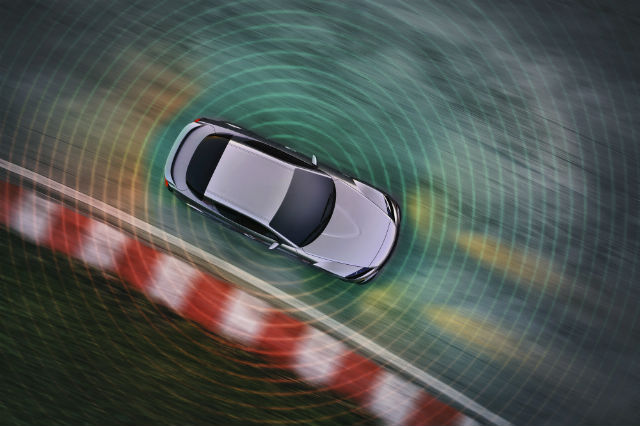The more we see and hear about vehicles getting closer to becoming fully self-driving cars, the more confusing these autonomous car features and systems can get for drivers. With names like Tesla‘s Autopilot, Subaru’s EyeSight, Nissan’s ProPilot Assist, and Cadillac’s Super Cruise, it seems that autonomous driving has arrived.
The truth that is there are no fully autonomous vehicles available today – and there may never be. The autonomous features found in cars are meant to assist a human in driving a car – not operate the vehicles on their own. This is particularly true in the winter, when poor weather can leave autonomous car features ineffective.
Levels of Automation
There are six levels of vehicle autonomy. Level 0 has no automation, Level 1 controls speed and braking, and level 2 controls speed, braking and steering. In both level 1 and 2, which is where most autonomous vehicles fall, the driver needs to be involved. Level 3 promises more control, but the driver needs to jump in when the system has trouble navigating a certain situation. Level 4 offers full hands-free automation within a geographic area but requires the driver to take over when leaving a certain zone or geo-fenced area. The final level of automation, level 5, is what some people dream of – a true driverless car. In this car, you set the destination, read, take a nap, work remotely, and stop only for fuel until you arrive at your destination. Level 3, 4 and 5 cars are not yet available for the driving public, although Level 3 automation might be available in the near future.
While the levels of automation and clearly defined, the names and descriptions car manufacturers provide can be anything but. As an example, Tesla offers two autopilot packages: Autopilot and Full Self-Driving Capability. Tesla goes on to state that Autopilot and Full Self-Driving Capability are intended for use with a fully attentive driver, who has their hands on the wheel and is prepared to take over at any moment. Cadillac says, “Cadillac Super Cruise is the first true hands-free driving assistance feature for compatible highways. Unlike other driver assistance systems, Super Cruise utilizes advanced technologies to provide the ease and convenience of hands-free driving.”
Tesla and Cadillac promise Level 2 hands-free driving. Yet even these systems are driver-assistance systems not designed to replace the driver. Today there are no self-driving, semi-autonomous vehicles that can operate in all weather conditions.

Using Autonomous Car Features in Poor Weather
So what happens when you have these features in a new vehicle and the weather turns bad? Suddenly you are driving along and you run into a heavy rainstorm, fog or snow. In just about every car with these systems that I have driven, the features temporarily shut down. This can even include back-up and blind-spot monitors as well as automatic forward collision systems.
All these systems rely on cameras and/or sensors to operate properly. When the sensors or cameras get blocked, the system issues a warning message telling the driver the systems are disabled. Just like we have learned to shut off cruise control during inclement weather, a driver needs to know what their semi-autonomous vehicle is capable of. As of today, these Level 2 vehicles are designed to work with the driver, not replace the driver.
Someday these features will be available to use when the rain is down-pouring, the snow in falling and the fog is thick. Until then there is no technology that replaces a fully engaged driver.
Read up on research and studies on autonomous vehicle technologies and trends by the AAA Foundation for Traffic Safety.
















